Related Research Articles

Peter Williston Shor is an American professor of applied mathematics at MIT. He is known for his work on quantum computation, in particular for devising Shor's algorithm, a quantum algorithm for factoring exponentially faster than the best currently-known algorithm running on a classical computer.

Martin David Davis was an American mathematician and computer scientist who contributed to the fields of computability theory and mathematical logic. His work on Hilbert's tenth problem led to the MRDP theorem. He also advanced the Post–Turing model and co-developed the Davis–Putnam–Logemann–Loveland (DPLL) algorithm, which is foundational for Boolean satisfiability solvers.

The Courant Institute of Mathematical Sciences is the mathematics research school of New York University (NYU). Founded in 1935, it is named after Richard Courant, one of the founders of the Courant Institute and also a mathematics professor at New York University from 1936 to 1972, and serves as a center for research and advanced training in computer science and mathematics. It is located on Gould Plaza next to the Stern School of Business and the economics department of the College of Arts and Science.
Society for Industrial and Applied Mathematics (SIAM) is a professional society dedicated to applied mathematics, computational science, and data science through research, publications, and community. SIAM is the world's largest scientific society devoted to applied mathematics, and roughly two-thirds of its membership resides within the United States. Founded in 1951, the organization began holding annual national meetings in 1954, and now hosts conferences, publishes books and scholarly journals, and engages in advocacy in issues of interest to its membership. Members include engineers, scientists, and mathematicians, both those employed in academia and those working in industry. The society supports educational institutions promoting applied mathematics.

Richard Alfred Tapia is an American mathematician and University Professor at Rice University in Houston, Texas, the university's highest academic title. In 2011, President Obama awarded Tapia the National Medal of Science. He is currently the Maxfield and Oshman Professor of Engineering; Associate Director of Graduate Studies, Office of Research and Graduate Studies; and Director of the Center for Excellence and Equity in Education at Rice University.
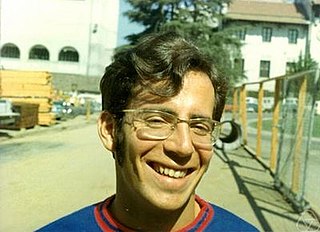
Stanley Osher is an American mathematician, known for his many contributions in shock capturing, level-set methods, and PDE-based methods in computer vision and image processing. Osher is a professor at the University of California, Los Angeles (UCLA), Director of Special Projects in the Institute for Pure and Applied Mathematics (IPAM) and member of the California NanoSystems Institute (CNSI) at UCLA.
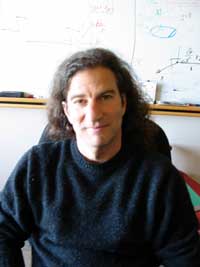
James Albert Sethian is a professor of mathematics at the University of California, Berkeley and the head of the Mathematics Group at the United States Department of Energy's Lawrence Berkeley National Laboratory.
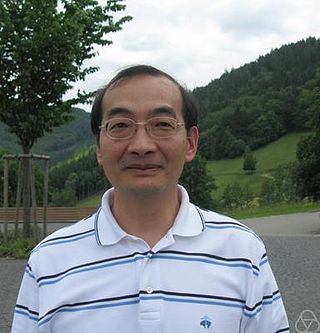
Horng-Tzer Yau is a Taiwanese-American mathematician. He received his B.Sc. in 1981 from National Taiwan University and his Ph.D. in 1987 from Princeton University. Yau joined the faculty of NYU in 1988, and became a full professor at its Courant Institute of Mathematical Sciences in 1994. He moved to Stanford in 2003, and then to Harvard University in 2005. He was also a member of the Institute for Advanced Study in Princeton, New Jersey, in 1987–88, 1991–92, and 2003, and was a distinguished visiting professor in 2013–14.

Emmanuel Jean Candès is a French statistician most well known for his contributions to the field of Compressed sensing and Statistical hypothesis testing. He is a professor of statistics and electrical engineering at Stanford University, where he is also the Barnum-Simons Chair in Mathematics and Statistics. Candès is a 2017 MacArthur Fellow.
Subhash Khot is an Indian-American mathematician and theoretical computer scientist who is the Julius Silver Professor of Computer Science in the Courant Institute of Mathematical Sciences at New York University. Khot has contributed to the field of computational complexity, and is best known for his unique games conjecture.
Nancy Jane Kopell is an American mathematician and professor at Boston University. She is co-director of the Center for Computational Neuroscience and Neural Technology (CompNet). She organized and directs the Cognitive Rhythms Collaborative (CRC). Kopell received her B.A. from Cornell University in 1963 and her Ph.D. from Berkeley in 1967. She held visiting positions at the Centre National de la Recherche Scientifique in France (1970), MIT, and the California Institute of Technology (1976).
Leslie Frederick Greengard is an American mathematician, physicist and computer scientist. He is co-inventor with Vladimir Rokhlin Jr. of the fast multipole method (FMM) in 1987, recognized as one of the top-ten algorithms of the 20th century.
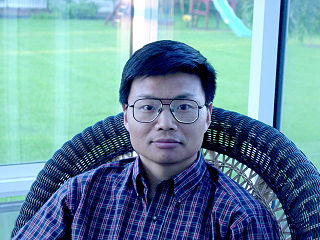
Weinan E is a Chinese mathematician. He is known for his pathbreaking work in applied mathematics and machine learning. His academic contributions include novel mathematical and computational results in stochastic differential equations; design of efficient algorithms to compute multiscale and multiphysics problems, particularly those arising in fluid dynamics and chemistry; and pioneering work on the application of deep learning techniques to scientific computing. In addition, he has worked on multiscale modeling and the study of rare events.
Michael J. Shelley is an American applied mathematician who works on the modeling and simulation of complex systems arising in physics and biology. This has included free-boundary problems in fluids and materials science, singularity formation in partial differential equations, modeling visual perception in the primary visual cortex, dynamics of complex and active fluids, cellular biophysics, and fluid-structure interaction problems such as the flapping of flags, stream-lining in nature, and flapping flight. He is also the co-founder and co-director of the Courant Institute's Applied Mathematics Lab.

Alan Stuart Edelman is an American mathematician and computer scientist. He is a professor of applied mathematics at the Massachusetts Institute of Technology (MIT) and a Principal Investigator at the MIT Computer Science and Artificial Intelligence Laboratory (CSAIL) where he leads a group in applied computing. In 2004, he founded a business called Interactive Supercomputing which was later acquired by Microsoft. Edelman is a fellow of American Mathematical Society (AMS), Society for Industrial and Applied Mathematics (SIAM), Institute of Electrical and Electronics Engineers (IEEE), and Association for Computing Machinery (ACM), for his contributions in numerical linear algebra, computational science, parallel computing, and random matrix theory. He is one of the creators of the technical programming language Julia.
Thomas Yizhao Hou is the Charles Lee Powell Professor of Applied and Computational Mathematics in the Department of Computing and Mathematical Sciences at the California Institute of Technology. He is known for his work in numerical analysis and mathematical analysis.
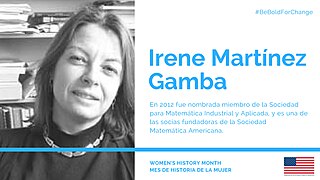
Irene Martínez Gamba is an Argentine–American mathematician. She works as a professor of mathematics at the University of Texas at Austin, where she holds the W.A. Tex Moncrief, Jr. Chair in Computational Engineering and Sciences and is head of the Applied Mathematics Group in the Oden Institute for Computational Engineering and Sciences.
Lisa J. Fauci is an American mathematician who applies computational fluid dynamics to biological processes such as sperm motility and phytoplankton dynamics. More generally, her research interests include numerical analysis, scientific computing, and mathematical biology. She is the Pendergraft Nola Lee Haynes Professor of Mathematics at Tulane University, and was president of the Society for Industrial and Applied Mathematics (2019–2020).
References
- ↑ "C.S. Peskin - MacArthur Foundation". The John D. and Catherine T. MacArthur Foundation.
- ↑ Peskin, Eric R. "High-Performance Computing (HPC) at NYU."
- ↑ Peskin, Charles S. (1998). "Optimal dynamic instability of microtubules". Doc. Math. (Bielefeld) Extra Vol. ICM Berlin, 1998, vol. III. pp. 633–642.
- ↑ James H. Wilkinson Prize in Numerical Analysis and Scientific Computing
- ↑ "C.S. Peskin - MacArthur Foundation". The John D. and Catherine T. MacArthur Foundation.
- ↑ "List of active members by class" (PDF). The American Academy of Arts & Sciences.
- ↑ "Charles Peskin". The National Academy of Sciences.
- ↑ "Member listing" (PDF). National Academy of Medicine. 2023. Retrieved 2024-04-19.
- ↑ "Fellows of the AMS: inaugural class" (PDF). The American Mathematical Society.
- ↑ "SIAM names its inaugural fellows class". The Mathematical Association of America.